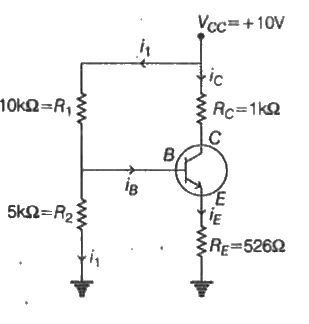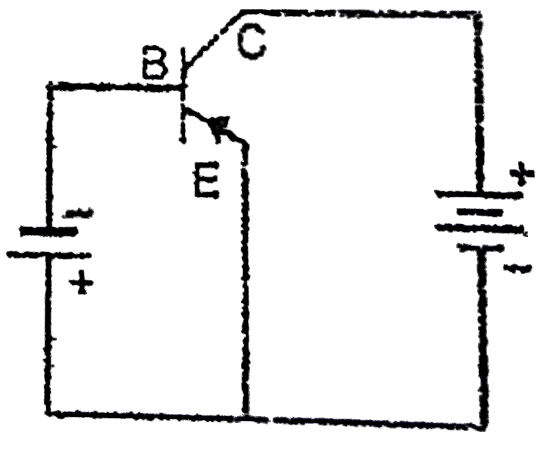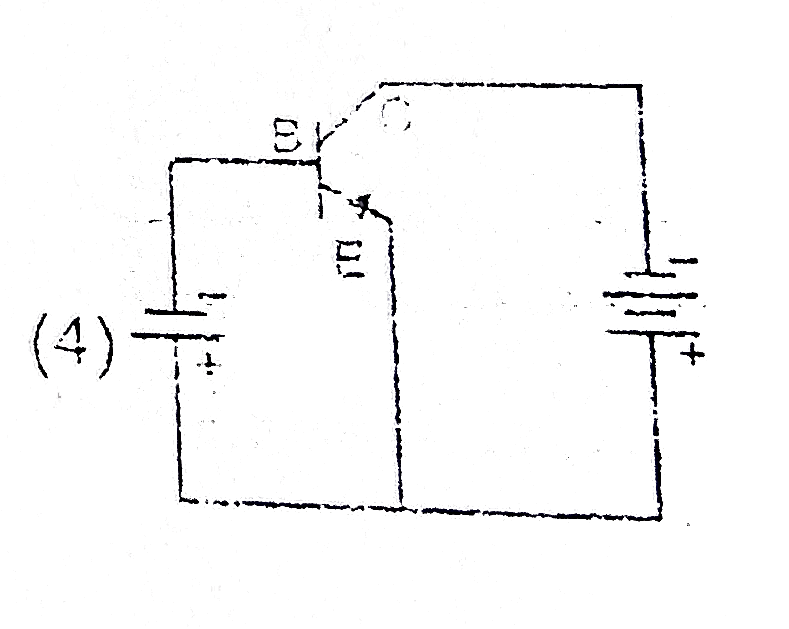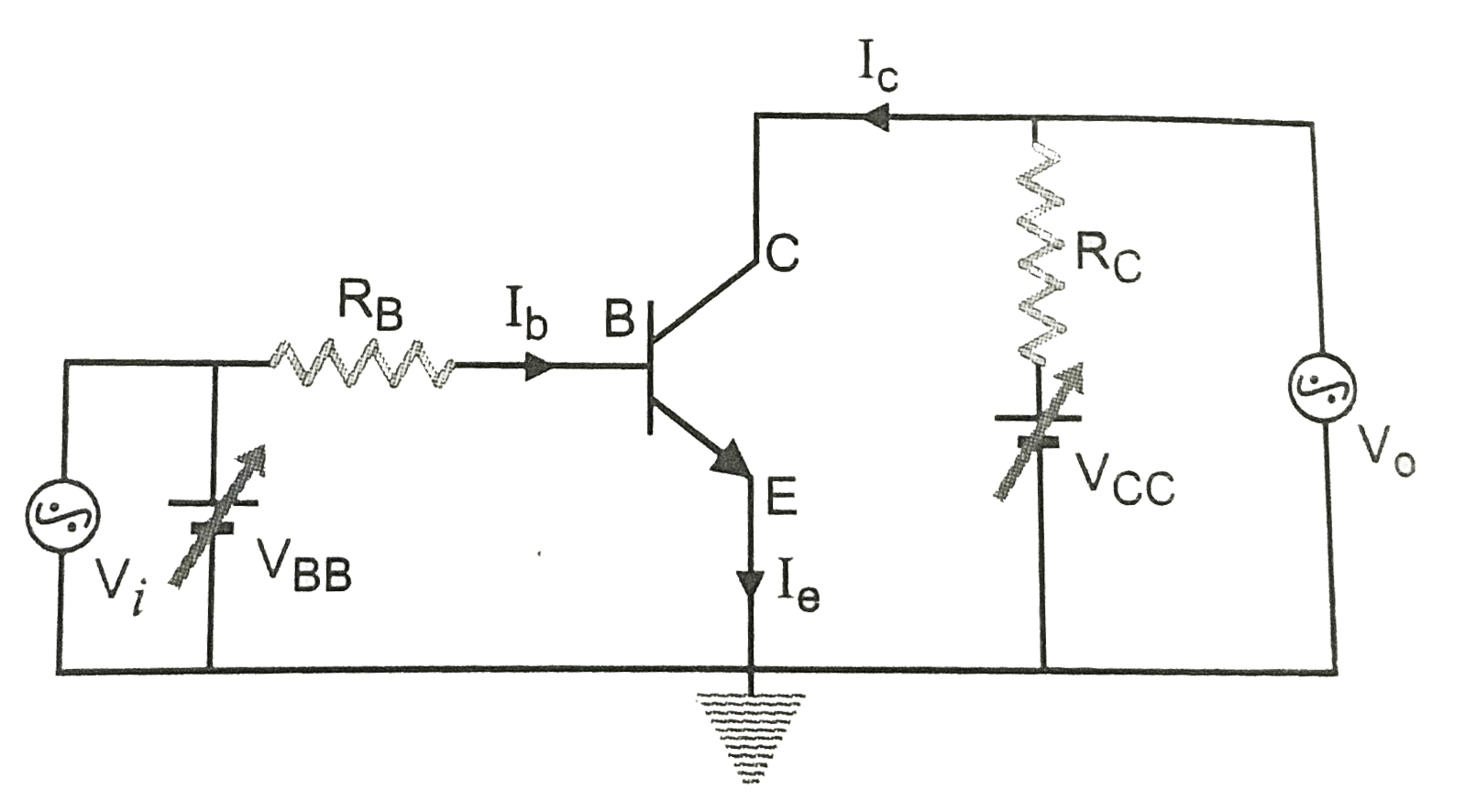Determine VCE in the following silicon based transistor circuit

6.8V
2.0 V
5.9 V
2.4 V
The correct Answer is:D

Using KVL to CE circuit
VCC=iCRC+VCE+iERE
=iCRC+VCE+iCRE (∴iE≈iC)
⇒VCE=VCC−iC(RC+RE)…(i)
By Ohm.s law, current i1 is:
i1=VCCR1+R2=10V15kΩ=23mA
Now, V2=i1R2
=23mA×5kΩ=103
V2=3.3V
KVL to base circuit gives, V2=VBE+iERE
For silicon transistor, VBE=0.7V⇒iE=V2−VBERE
=3.3−0.7526≈5mA
So, iC≈iE=5mA
Hence, from Eq (i) VCE is
VCE=VCC−iC(RC+RB)
=10−5mA(1kΩ+526Ω)
≈2.4V
Topper's Solved these Questions
Similar Questions
Knowledge Check
ट्रांजिस्टर के विभिन्न विन्यासो (configurations ) का वर्णन करे ।
AInput resistance is very large while output resistance is very smallBinput resistance is very small while output resistance is very highCboth input and output resistance are very smallDboth input and output resistances are very largeWhich one of the following circuits shows correct biasing of a PNP transistor to operate in active region in the CE mode-
A B
B C
C D
D
In a transistor output characteristics commonly used in common emitter configuration, the base current IB, the collector current IC and the collector-emitter voltage VCE have values of the following orders of magnitude in the active region
AIBandIC both are in μAandVCE in VBIB is in μA,IC is in mA and VCE in VCIB is in mA, IC is in μAandVCE in mVDIB is in mA, IC is in mA and VCE in mV
In common emitter transistor as shown in Fig., the VBB supply can be varied from 0 V to 5.0V. The Si. Transistor has βac=250 and RB=100kΩ,Rc=1kΩ,VCC=5.0V. Assume that when the transistor is saturated, VCE=0V and VBE=0.8V. Calculate the minimum base current, for which the transistor will reach saturation. Hance, determine Vi when the transistor is 'switched on' find ranges of Vi for which the transistor is switched off and switched on.

View SolutionIn common emitter transistor as shown in Fig., the VBB supply can be varied from 0 V to 5.0V. The Si. Transistor has βac=250 and RB=100kΩ,Rc=1kΩ,VCC=5.0V. Assume that when the transistor is saturated, VCE=0V and VBE=0.8V. Calculate the minimum base current, for which the transistor will reach saturation. Hence, determine Vi when the transistor is 'switched on' find ranges of Vi for which the transistor is switched off and switched on.

View SolutionIn the given figure, a transistor is connected in common emitter configuration . If VBE=1V and current gain β=100, then the voltage across collector- emitter terminals VCE is
[VBE-voltage across base-emitter junction ]

View SolutionIn the given figure, a transistor is connected in common emitter configuration . If VBE=1V and current gain β=100, then the voltage across collector- emitter terminals VCE is
[VBE-voltage across base-emitter junction ]

View SolutionTransfer characterstics [output voltage (Vo) vs. input voltage (Vi)] for a base biased transistor in CE configuration is as shown in the figure. For using transfor as a which, it is used

View Solution
